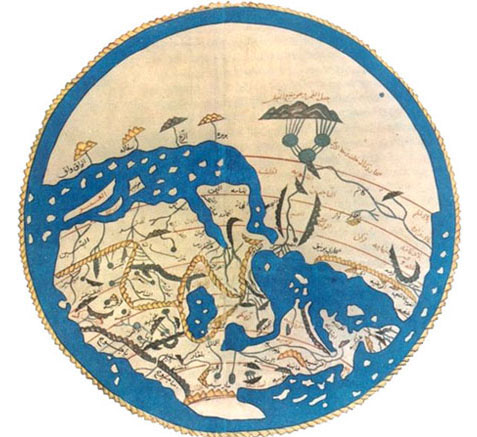Article of the Month - July 2023
“Singlewomen in the Late Medieval Mediterranean”
(Michelle Armstrong-Partida: History, Emory University
& Susan McDonough:
History, University of Maryland Baltimore County)
Armstrong-Partida, Michelle and Susan McDonough. "Singlewomen in the Late Medieval Mediterranean." Past & Present 259 (2022): 3—42.
To read the article, request a pdf from the authors.
Keywords: Singlewomen • women’s economic activities • women’s labor • migration • mobility • enslaved women • manumission • European Marriage Pattern • community
Abstract:
This article challenges a long-entrenched model of two discrete marital regimes in northern and southern Europe. Demographer John Hajnal argued in 1965 that a distinctive north-western European Marriage Pattern emerged post-1700 when a large population of unmarried men and women married in their early to late twenties and formed their own household rather than join a multi-generational household. The corollary to this argument is that women in southern Europe married young and universally, and thus rarely entered into domestic service. Medievalists have embraced and repeated this paradigm, shaping assumptions about the Mediterranean as less developed or ‘less European’ than the north and ignoring the experience of women enslaved throughout the region.
Notaries and judicial officials in medieval Barcelona, Valencia, Mallorca, Marseille, Palermo, Venice, Famagusta and Crete recognized singlewomen owning property, buying, selling and manumitting enslaved people, appointing procurators, committing crimes and making wills. We reintegrate the experiences of singlewomen, both enslaved and free, into the daily life of the medieval Mediterranean. Understanding how these women made community, survived economically and participated in the legal and notarial cultures of their cities reframes our understanding of women’s options outside marriage in the medieval past.
Nomination Statement:
This rigorous and thought-provoking article is the fruit of the collaboration of two medievalists, Michelle Armstrong-Partida and Susan McDough, whose work focuses on gender in the medieval Mediterranean. This piece is not only theoretically sophisticated but archival-based and will undoubtedly contribute to challenging an enduring historical narrative that assumes a distinct “European Marriage Pattern” for medieval women in Northern and Southern Europe. According to this view in the South women married in more significant numbers and at a younger age and did not have an active economic role. Nevertheless, by focusing on archival sources featuring non-elite singlewomen (enslaved, manumitted, and freeborn) from port cities in Western Europe, Armstrong-Partida and McDonough show clearly how inaccurate this model is and how singlewomen were not only significant demographically but also economically active and mobile around the Mediterranean.
Authors’ Comment:
Our article takes on a long-entrenched assumption among historians of women and gender that there were two distinct marital regimes in northern and southern Europe due to the absence of women in the labor market of the Christian Mediterranean. For more than four decades, historians have repeated the demographer John Hajnal’s claims that women in northern Europe married late after a period of independent single life, and established marital homes separate from their natal families. This “European Marriage Pattern” has been credited with women’s economic and social independence in the north, while historians assumed that women in the south married young, and universally, and thus rarely entered into domestic service, the labor market, or lived independently. Archival sources throughout the Mediterranean, however, tell a different story. Based on notarial and judicial records from Barcelona, Valencia, Mallorca, Marseille, Palermo, Venice, Famagusta, and Crete, we show that singlewomen, both freeborn and enslaved or freed, loaned money, owned property, bought, sold, and manumitted enslaved people, and recorded last wills and testaments. We argue that singlewomen are part of the Mediterranean’s interconnectivity and that their socio-economic activities are signs of singlewomen’s acculturation and adaptation to larger migration and economic trends in the region. We hope to make an intervention in the scholarship of medieval Europe that has paid little attention to laboring-class women in southern Europe. This article and our larger book project seeks to make Mediterranean singlewomen visible to illustrate not only their involvement in the economy but also their mobility throughout the region as a counternarrative to studies of the Mediterranean that primarily focus on the actions of men when studying the connectivity and migration of people and goods and cultural exchange.
As feminist historians of gender, deeply influenced since graduate school by the important studies of women’s lives in Northern Europe, our hope is that this reassessment of singlewomen’s economic activities and community-building in the Mediterranean is also an invitation to deepen comparative work across the North/South divide, and, dare we suggest, blur that historiographically too-sharp line. This is a driving force in our collaborative work as well as our single-authored projects on concubinage and sex work in the medieval Mediterranean.
Would you like to discuss this article?
Start a thread on the Mediterranean Seminar list-server
See the other Articles of the Month here.
